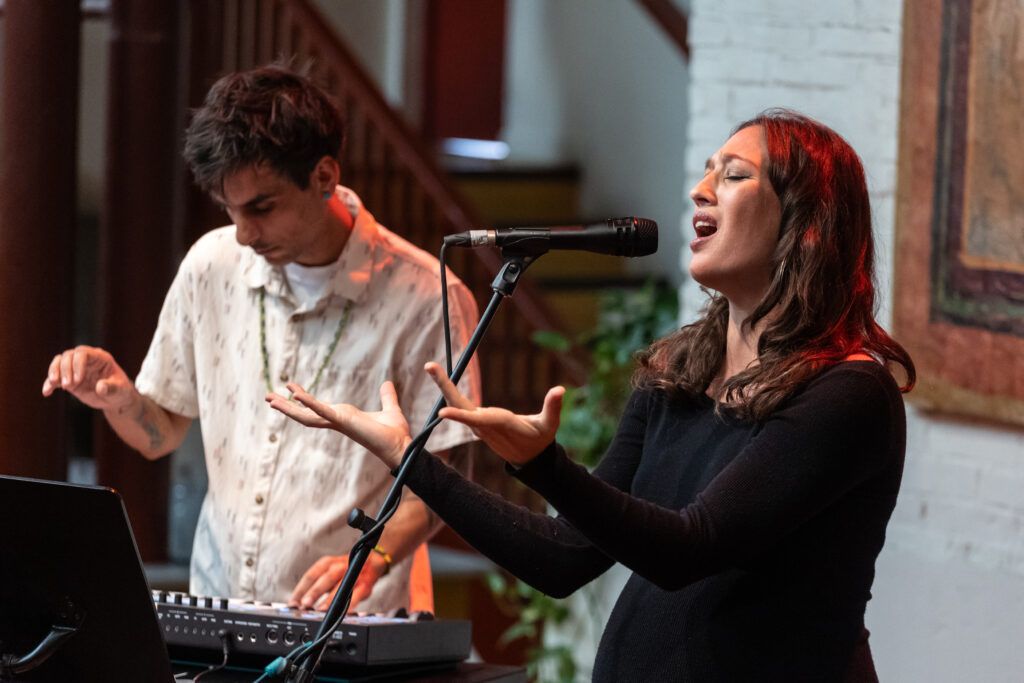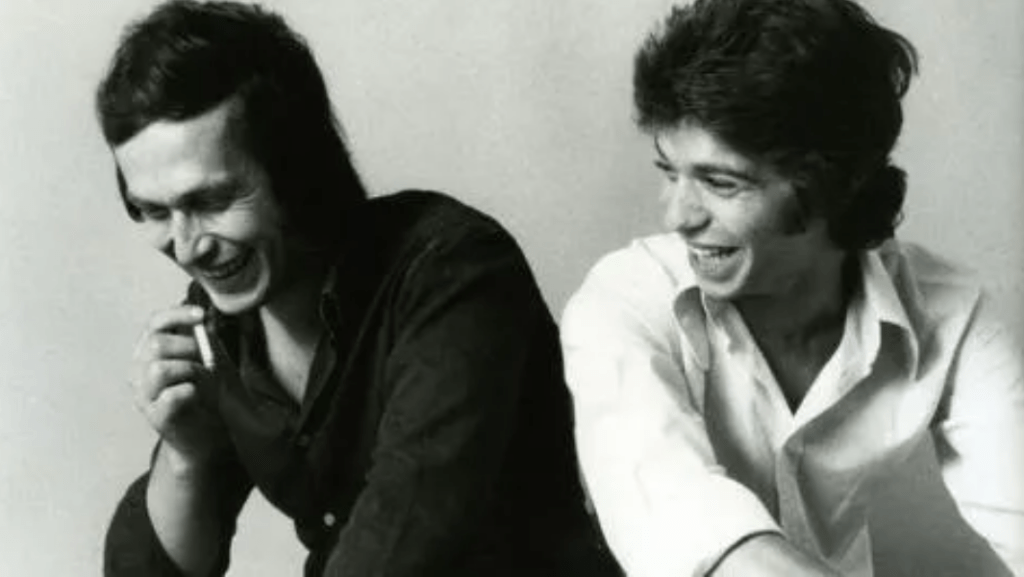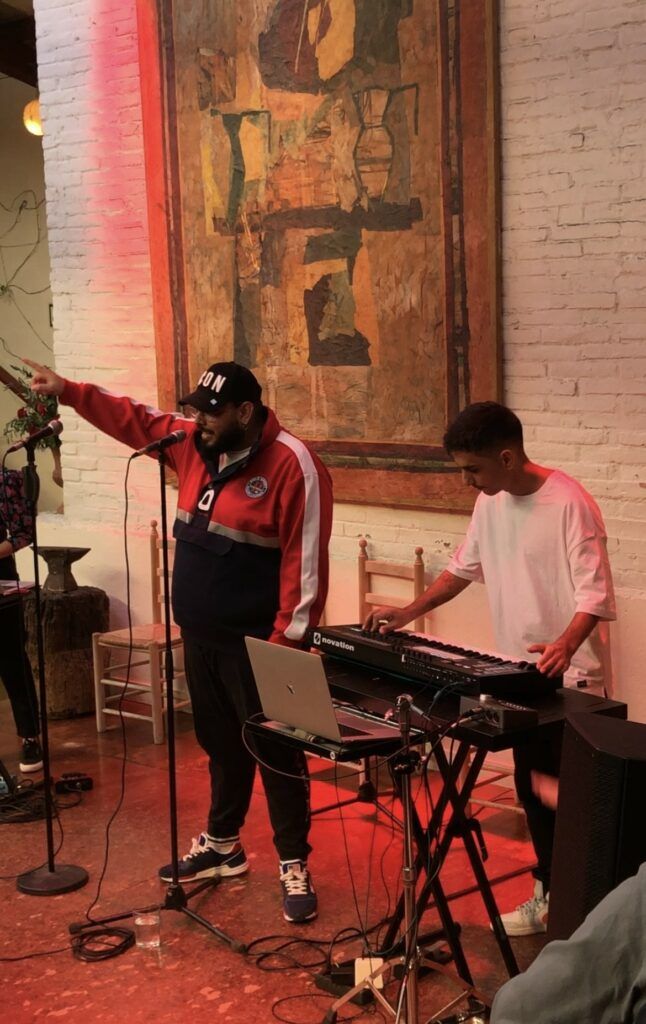Flamenco Today: From “La leyenda del tiempo” to “El Mal Querer”
On November 2, 2018, Catalan artist Rosalía released her second album, “El Mal Querer” instantly becoming the most listened-to album in a day on Spotify in Spain. The whole country had “Malamente,” its main single, on repeat, and it seemed like everyone couldn’t resist occasionally shouting the refrain’s catchy lyrics. In the same year, the prestigious Billboard magazine named it the best Latin album of the year, later ranking it 25th on their list of the 100 best albums of the decade. Rosalía holds one Grammy International and six Latin Grammys.
As she puts it, “I didn’t build my career on having hits; I have hits because I laid the groundwork.” Rosalía solidified and indicated what it took to sound fresh in Spain: electronic beats, ad libs (equivalent to flamenco “jaleos”), and production arrangements from trap and urban music. What stood out was that she accomplished all of this while making the tradition of flamenco rhythm and melody the protagonist. In “Di mi nombre” for example, she sings the “yali,” a song traditionally sung at Gypsy weddings; “Reniego,” the title of the fifth song, features lyrics typical of “siguiriyas” sung by Tomás Pavón in the mid-20th century. The phrase “Amargas penas te vendo / caramelos también tengo” in “De aquí no sales” is a reference to the candy vendor’s street cry popularized by the gaditano Macandé in the last century.

Camarón, Paco, Lole, Manuel, and Enrique

However, discussing Rosalía’s flamenco leap requires acknowledging the revolution in the second half of the 20th century. Before her, there were Camarón and Paco de Lucía. The first nine albums by these two from Cádiz, between 1969 and 1977, were already marking a new way of playing and singing flamenco. This coincided with the trend of professionalizing flamenco, taking it to professional studios, and moving it beyond private circles of homes, courtyards, and local venues. The real shake-up came with the 1979 album “La leyenda del tiempo” by Camarón with Tomatito, considered by many as the best avant-garde flamenco album. It introduced new instruments like drums, electric guitar, sitar, bass, or keyboards—something unthinkable at the time for flamenco orthodoxy.
It is said that Camarón got the itch for innovation when he heard the album “Nuevo día” four years earlier by Lole and Manuel, a couple from Triana who absorbed all their flamenco training in homes and courtyards, making flamenco popular among the youth. It was the era of cultural and social revolution in Spain after Franco’s death in 1975, and flamenco was not going to be left behind.
Foreign rock vinyl and CDs made their way into homes, and in Granada, a young Enrique Morente was also riding the wave of renewal. After singing and recording the most traditional songs, he began to see that the boundaries of “jondo” (deep) were permeable. He pioneered the use of vocal effects, collaborated with choirs like the Bulgarian Voices, adapted poetry to flamenco, fused with classical music, and worked with groups as far from flamenco as Sonic Youth. However, Morente’s ultimate surprise came in 1996 with the album “Omega,” with the rock group Lagartija Nick. A cult album that showed how to blend flamenco and rock in perfect harmony—a sound that many active groups still seek today, such as Los Planetas, Grupo de Expertos Solynieve, or Derby Motoreta’s Burrito Kachimba.
Meanwhile, in Seville, with producer Ricardo Pachón at the helm, the subgenre known as “rock progresivo andaluz” or simply “rock andaluz” was taking place during the 70s. Groups like Triana, Pata Negra, Veneno, or Smash were already playing electric guitars without losing the flamenco and Andalusian essence.
As a Barcelona tablao, we cannot ignore the musical revolution that was Catalan rumba. According to flamenco scholars, it is a derivation of tangos and tanguillos, heavily influenced by Cuban rhythms. This genre developed within the Andalusian and Gypsy community in the 1950s in the neighborhoods of Gracia, Hostafrancs, and El Raval. The breakthrough came with the considered “fathers of rumba”: Peret and Antonio González “El Pescaílla,” the husband and guitarist of Lola Flores. The lively and festive airs brought by this style (also considered a genre in itself) convinced the general public. Figures like Bambino further popularized it with “rumba songs” incorporating typical Spanish and Latin American folk songs into this Catalan genre, such as “Procuro olvidarte” “Adoro” or “Corazón loco” In terms of 21st-century rumba groups, the major exponent has been and still is Estopa, also from Catalonia.
Flamenco in the 21st century: More alive than ever

Back to our present days, following “El Mal Querer,” another recent album that has broken records and resonated across Hispanoamerica is “El Madrileño” by C. Tangana, released in 2022. Although not strictly flamenco, it bears a clear influence of flamenco, both musically and aesthetically. This influence is evident in the “jaleos” hand clapping, specific lyrics, and the inclusion of deep voices like Niño de Elche, another 21st-century artistic proposal aiming to blend the new and the old.
Another young artist pushing the genre to new places is Rocío Márquez. The singer from Huelva, trained in flamenco and winner of the prestigious Lámpara Minera at the Cante de las Minas festival, released the album “Tercer Cielo” in 2022. Collaborating with the musician from Jerez, Bronquio, a “rhythm activist” as defined by Mondo Sonoro magazine, they achieved a brotherhood between the most common flamenco styles and the more forgotten ones (such as “debla”, “garrotín”, “toná”, or “pregón”) the sounds and musical atmospheres of the 21st century, and Rocío’s unmistakably flamenco timbre.
A glance at the lineups of Spain’s major festivals makes it clear that flamenco is more alive than ever. “La Plazuela” for instance, a duo from Granada, fills venues with a sound, lyrics, and melodies clearly inspired by flamenco. Israel Fernández, one of today’s most esteemed young Gypsy voices, demonstrates how modern the flamenco roots can be. Additionally, new artists keep emerging, bringing the flamenco imaginary to the forefront from other musical genres, such as Califato ¾, María José Llergo, Las Mestizas, Queralt Lahoz, or Los Voluble.
The current offering is extensive: in addition to groups experimenting with flamenco and avant-garde, orthodox enthusiasts can enjoy the oldest “cantes” in “tablaos” clubs, and festivals across almost all of Spain. Both young and older artists continue to respect the roots and tradition. This flamenco reality comes alive every night at the Tablao de Carmen; we invite you to come and experience it up close.




